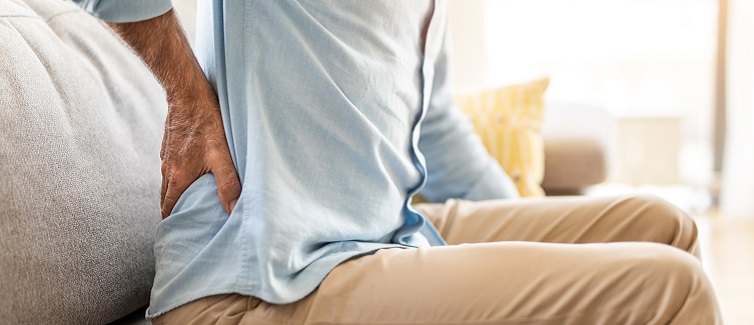Hip pain is a common complaint, and a frequent reason patients seek help from their doctors. There are a number of conditions or injuries that can lead to pain around the hip, including:
- Hip (femoroacetabular) impingement
- Groin strain
- Labral tears
- Dislocation or injury to the surrounding muscles
- Arthritis (the most common cause)
Patients with suspect pain around the hip seek an expert’s help for a variety of symptoms, which include:
- Groin pain
- Pain in the joint area, specifically in a “C” shape
- Pain on the outside of the hip directly over joint
Dharmesh Vyas, MD, orthopaedic surgeon, states, “While these conditions are common, due to the anatomy of the hip, patients often mistake hip pain for what is actually back pain.” The hip joint sits behind the groin area, which is why groin pain is commonly associated with hip pain. The spine runs from the base of your skull down to the tip of the tailbone and contains nerves. When these lower spine nerves are aggravated patients may mistake their back pain for hip pain.
Symptoms of Lower Back Pain
Low back pain will affect 60 to 80 percent of people at some point in their lives. Much of the pain experienced by that group is caused by a herniated disc pressing on a spinal nerve. Those symptoms may include:
- Pain shooting down the leg
- Increased pain when bending or sitting
- Numbness or weakness in the leg/foot
In addition to herniated discs, low back pain may be a result of:
- Ruptured discs
- Irritation or inflammation of nerves
- Spinal stenosis
Diagnosing the Source of the Pain
The first step to correctly treating the pain is to receive an accurate diagnosis. Dr. Vyas explains, “When I see a patient seeking treatment for suspected hip pain, the first thing I do is conduct a physical exam and take a history.” A history of the pain will include asking questions such as:
- Where is the pain located?
- When does the pain occur? With activity? At rest?
- What type of pain is occurring? Is it sharp? Is it achy, etc.?
After the initial appointment, your doctor may request an x-ray in order to take a closer look at the bones. Based on the physical exam, x-ray, and possibly an MRI your doctor should be able to make an accurate diagnosis and suggest an individualized treatment plan.
Treatment for Back or Hip Pain
Depending on the diagnosis, treatment options can include:
- Activity modification
- Anti-inflammatory medication
- Physical therapy
- Referral to a specialist
For most patients, surgery is the last option, since medication and physical therapy typically have a high success rate. However, if you are experiencing pain that lasts longer than four to six weeks, you should consult your doctor.
To make an appointment with UPMC Orthopaedic Care, call 412-687-3900.
